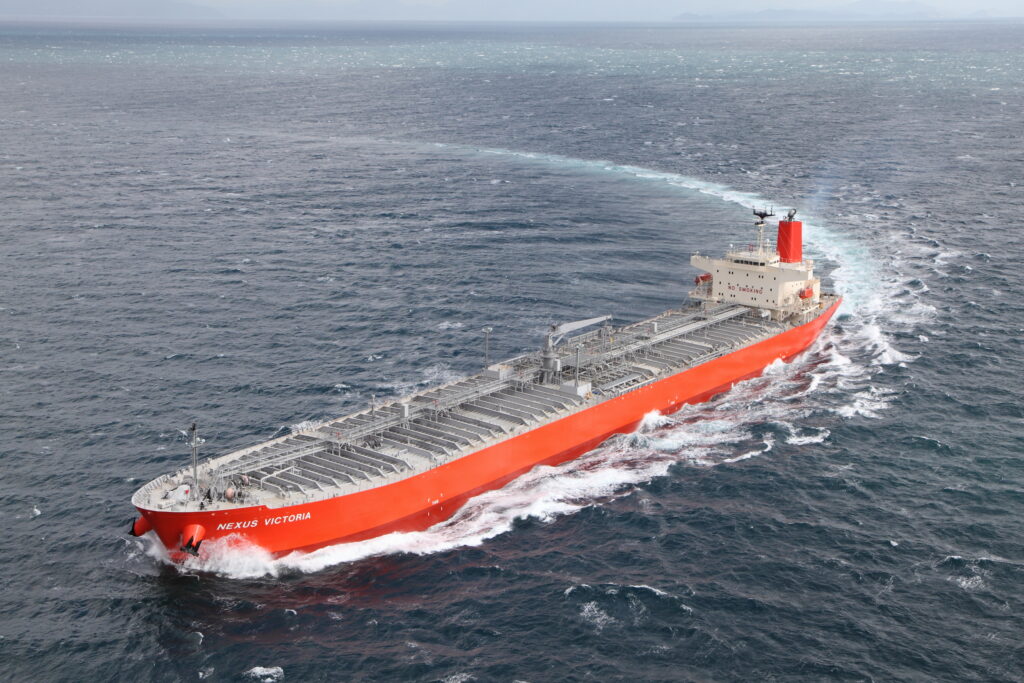
Value Maritime combines scrubber with CO2 capture
The combination of a scrubber and a CO2 capture system is becoming increasingly interesting for maritime shipping. The scrubber removes sulphur oxides and soot from exhaust gas, enabling sailing on cheap fuel oil. And, by capturing part of the CO2 emitted, a ship achieves the IMO goal of reducing greenhouse gas emissions by at least 20% by 2030.
Original article written in Dutch by Hans Heynen from Schuttevaer: https://www.schuttevaer.nl/nieuws/actueel/2024/05/11/value-maritime-combineert-scrubber-met-co2-afvang/
Rotterdam-based Value Maritime developed the Filtree System for this purpose. It consists of a scrubber plus a CO2 capture installation. The company, founded in 2017, has now installed dozens of these systems. “We have supplied a total of 54 emission systems for capturing sulphur oxides and soot,” says Global Commercial Director Yvette van der Sommen. “Of these, 24 are also equipped with a Carbon Capture and Storage (CCS) module, for capturing and storing part of the CO2 emissions from the ship’s engines.”
Operation
Value Maritime builds various types of Filtree systems for ships with engines from 3 to 15 MW. By combining two systems, the maximum power can increase to 30 MW. With the Filtree system, a scrubber flushes 99.9% of the sulphur oxide and 99% of the particulate matter (soot) from the exhaust gas using seawater. The cleansed and cooled exhaust gas then flows into the exhaust gas boiler of the CCS module. There, as it rises, the gas comes into contact with a stream of descending amine droplets. Thanks to the low exhaust temperature, part of the CO2 from the exhaust gas binds to the amine particles.
“Although, chemically speaking, CO2 remains a gas, the compound behaves like a liquid and can therefore easily be pumped to a storage tank,” says Van der Sommen. The CO2 is not liquefied and not stored under pressure. This reduces the so-called ‘fuel penalty’, the extra energy that capture and storage costs.”
Recyclable
The CO2-saturated amine is pumped out of the vessel during a port call and replaced with clean amine.
On land, CO2 and amine are then separated again with the help of heat. “The pure amine can therefore be used again and again. When it is necessary to liquefy the CO2 for processing or storage, this is done on land with green energy and not with fuel oil, which would be the case on board.”
Up to 40% reduction
The Filtree System can remove up to 40% of the CO2 from the exhaust gases. The actual percentage that can be captured and stored during a voyage depends on fuel consumption in combination with the length of a voyage and the capacity of the storage tanks.
An example is the contract that Value Maritime recently concluded with the Japanese Mitsui O.S.K. Lines (MOL) for the supply of a Filtree system for the product tanker Nexus Victoria (75,000 dwt). This will soon be the largest ship sailing with the system.
“An existing tank is being converted for CO2 storage. MOL has calculated that there is storage space for 10% of the CO2 emitted during a trip,” says Van der Sommen.
Eastern Pacific Shipping (EPS) had a similar conversion of an existing tank carried out on the tanker Pacific Cobalt (49,886 dwt) in Rotterdam at the beginning of 2023. Value Maritime then installed a complete Filtree System in just seventeen days.
“When the Pacific Cobalt is in port, we pump the CO2-saturated amine from the tank with a barge and replace it with clean amine. This looks like a normal bunker operation. This is a suitable method for product tankers. On container feeders with CCS, we store the CO2 in so-called CO2 batteries, which are in fact tank containers. Once full these are exchanged for new ones.”
Westland
From Rotterdam, the CO2 collected goes to greenhouses in Westland. “The CO2 accelerates the growth of crops there,” says van der Sommen. “In this way we can already put CO2 to good use. We can wait until there are other options for storage or processing into e-fuel, but that will take a long time. And if we don’t take steps now, there will be no logistics solutions, regulations will not be prepared and there will be no certifications.”
Widely applicable
In principle, CO2 can be extracted from any flue gas with this system, including from engines running on methanol or natural gas. “However, at the moment it is primarily economically attractive for ships to sail on fuel oil, for which they already need a scrubber. Ultimately, you want to do it with green methanol in the future, then you will end up with negative CO2 emissions.”
Amines, soot and sulphur
When using sulphur-containing fuel, a scrubber that also captures soot is essential for proper operation. Otherwise, the sulphur oxides and soot particles bind to amines and block CO2 capture. To prevent pollution of seawater, Value Maritime’s sulphur scrubbers are equipped with a clean-loop mechanism that filters the washing water and neutralises the pH value before discharging the seawater. The oil and soot residues filtered from the washing water are stored in a sludge tank for delivery to port.
At the molecular level, amines used for CO2 capture always contain a nitrogen atom with at least one carbon atom and a number of hydrogen atoms (for example NCH5). Amines bind with CO2 at relatively low temperatures and release it at high temperatures, a bit like carbon dioxide in a bottle of spring water.
Value Maritime builds all its systems in Europe. “We are a Dutch company and do everything in-house. We install the scrubbers in Europe, but also in Asia when ships carry out their special surveys there.”
Original article written in Dutch by Hans Heynan from Schuttevaer: https://www.schuttevaer.nl/nieuws/actueel/2024/05/11/value-maritime-combineert-scrubber-met-co2-afvang/
